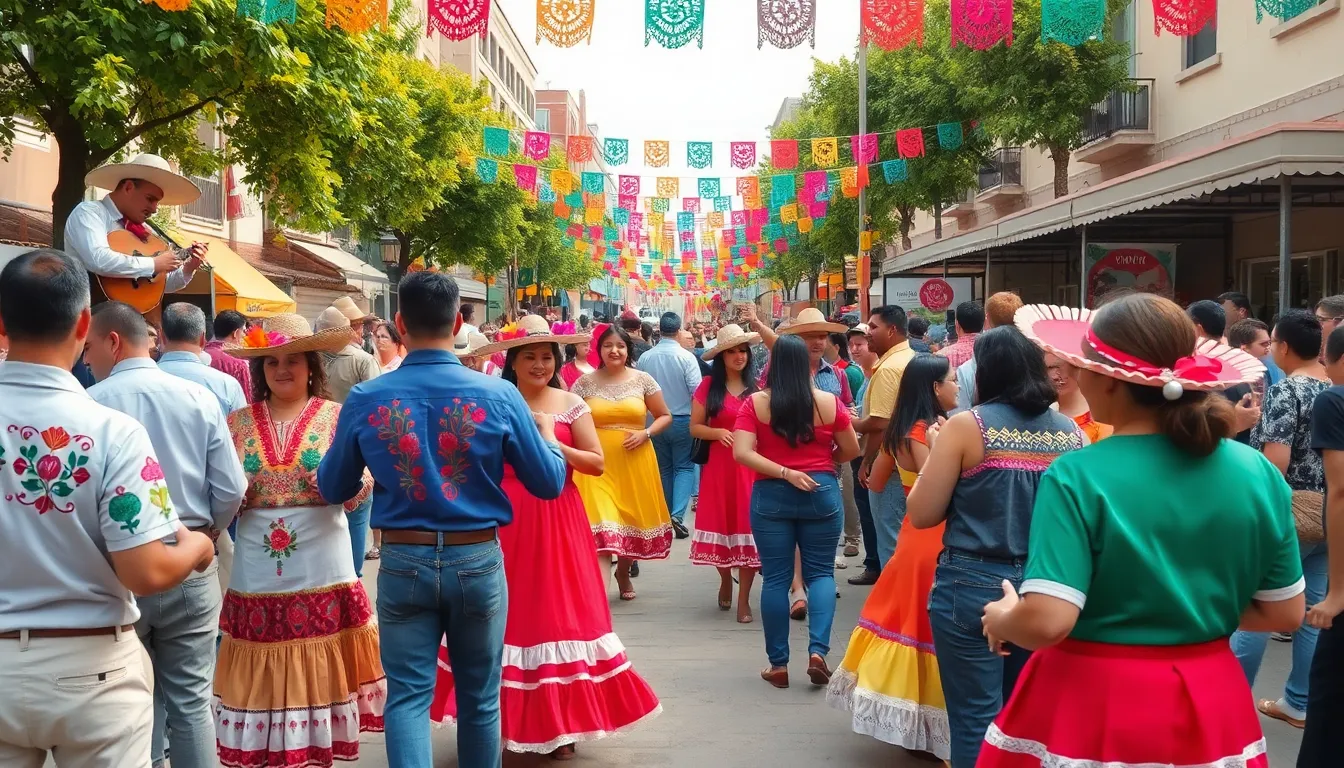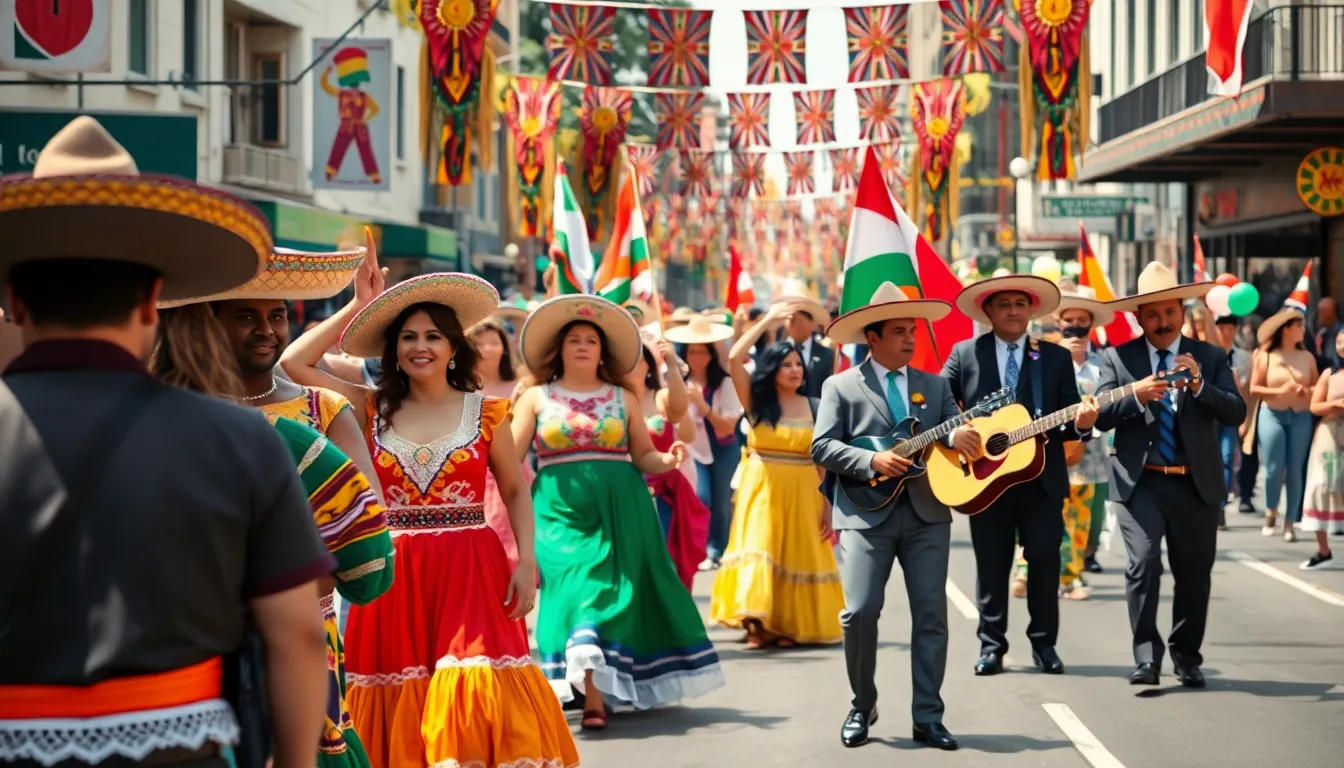Cinco de Mayo—it’s the day when sombreros fly off the shelves and tacos become the unofficial currency of celebration. But what’s the real reason behind this festive occasion? While many might think it’s just an excuse to indulge in margaritas, the truth is far more inspiring. This vibrant holiday commemorates the unlikely victory of the Mexican army over French forces at the Battle of Puebla in 1862.
Table of Contents
ToggleHistorical Significance of Cinco De Mayo
Cinco de Mayo honors a pivotal moment in Mexican history, marked by the resilience of the Mexican army against foreign intervention. This day highlights national pride and unity as it recalls the Battle of Puebla.
The Battle of Puebla
The Battle of Puebla occurred on May 5, 1862. During this confrontation, Mexican forces defended the city of Puebla against French troops. Napoleon III sought to establish a French empire in Mexico, facing overwhelming odds. The Mexican army, led by General Ignacio Zaragoza, achieved a remarkable victory, demonstrating determination and strategy against superior numbers. This event galvanized Mexican nationalism and served as a symbol of resistance against foreign domination. Despite subsequent challenges, the battle remains an enduring emblem of courage.
Key Figures Involved
General Ignacio Zaragoza emerged as a central figure in the Battle of Puebla. His leadership proved instrumental in rallying troops for the defense. Mexican President Benito Juárez also played a crucial role, opposing French intervention and reinforcing the nation’s sovereignty. Additionally, General Porfirio Díaz, fighting in the battle, later became a prominent leader. Together, these key figures inspired the Mexican people, showcasing their commitment to independence and unity. Their actions paved the way for a stronger national identity amidst adversity.
Cultural Celebrations

Cinco de Mayo features a rich tapestry of cultural celebrations that blend tradition and modern influences. These celebrations highlight Mexican heritage in various forms.
Traditional Practices
Traditional practices during Cinco de Mayo include vibrant parades, folkloric dances, and authentic cuisine. Mariachi bands often perform lively music, while hand-crafted decorations embody Mexican artistry. Families gather for meals that feature dishes such as mole poblano, tamales, and churros, all of which reflect regional flavors. Participants don traditional clothing, such as colorful dresses and embroidered shirts, showcasing the community’s pride and connection to their roots. Families also engage in storytelling, passing down historical narratives about the Battle of Puebla to educate younger generations.
Modern-Day Events
Modern-day events celebrate Cinco de Mayo in diverse ways across the globe. Cities host large festivals with live music, dance performances, and food vendors offering a variety of Mexican dishes. Public events focus on community engagement, with activities for children and adults alike. In the United States, celebrations highlight Mexican-American culture, fostering a sense of unity and multicultural appreciation. People attend block parties, sporting events, and street fairs that feature art exhibits and local crafts. Social media also amplifies these festivities, allowing wider audience participation and sharing of experiences.
Five Myths About Cinco De Mayo
Misconceptions about Cinco de Mayo often overshadow its true significance. Many people believe it marks Mexico’s Independence Day, but that event actually occurs on September 16.
Common Misconceptions
One common misunderstanding is that Cinco de Mayo is a nationwide holiday in Mexico. This isn’t accurate; the celebration primarily occurs in Puebla, where the historic battle took place. Another myth suggests that the day celebrates Mexican culture as a whole, rather than focusing specifically on the victory over French forces. Additionally, some people believe that Cinco de Mayo commemorates a significant Mexican-American holiday, but its roots lie deeply in Mexican history. Lastly, many assume it’s a day dedicated to drinking tequila and consuming tacos, which downplays the cultural and historical importance of the event.
Clarifying Facts
The victory celebrated on Cinco de Mayo occurred during the Battle of Puebla in 1862, showcasing the resilience of Mexican forces against a more powerful adversary. General Ignacio Zaragoza led the army, and the day symbolizes national pride rather than general cultural festivities. Events held in the United States often localize the celebration, emphasizing Mexican-American heritage and traditions. This holiday has grown in popularity across various communities, becoming a means to appreciate and honor Mexican cultural contributions. Educational institutions often incorporate lessons about the historical context to foster a deeper understanding among younger generations.
The Importance in Mexican-American Culture
Cinco de Mayo serves as an opportunity for Mexican-Americans to celebrate their heritage and history. The holiday encourages the acknowledgment of shared cultural roots, fostering unity within diverse communities. Vibrant parades and festive gatherings showcase traditional clothing, music, and dance, emphasizing the richness of Mexican culture.
Food plays a central role in the celebrations. Families and friends often come together to prepare and enjoy regional dishes like mole poblano and tamales, reinforcing culinary traditions. These gatherings symbolize a connection to cultural history, enhancing family bonds and community spirit.
Educational institutions utilize Cinco de Mayo to promote understanding of its historical significance. Lessons highlight the Battle of Puebla, providing context about Mexican resistance against foreign intervention. This approach helps younger generations appreciate their cultural background while reinforcing a sense of identity.
Misconceptions surrounding Cinco de Mayo frequently arise, especially regarding its distinction from Mexico’s Independence Day. Clear communication about the holiday’s origins combats myths, fostering a more accurate understanding of Mexican heritage. By raising awareness, celebrations in the U.S. emphasize local customs and traditions, celebrating Mexican-American identity.
Increasingly, Cinco de Mayo celebrations in the United States blend traditional and contemporary elements. Live music, dance performances, and food vendors create vibrant community experiences. Social media amplifies these festivities, enabling broader participation and sharing among diverse audiences. Through this engagement, Cinco de Mayo evolves into a platform for showcasing Mexican-American pride while preserving historical narratives for future generations.
Cinco de Mayo serves as a powerful reminder of resilience and national pride. It commemorates a pivotal moment in history that shaped Mexico’s identity and spirit. The celebrations today reflect not just the historical significance but also the vibrant culture that continues to thrive.
Through parades music and traditional food families and communities come together to honor their heritage. As awareness grows about the true meaning of Cinco de Mayo it’s essential to appreciate its roots while celebrating the rich tapestry of Mexican-American culture. This holiday fosters unity and understanding making it a meaningful occasion for all who participate.





